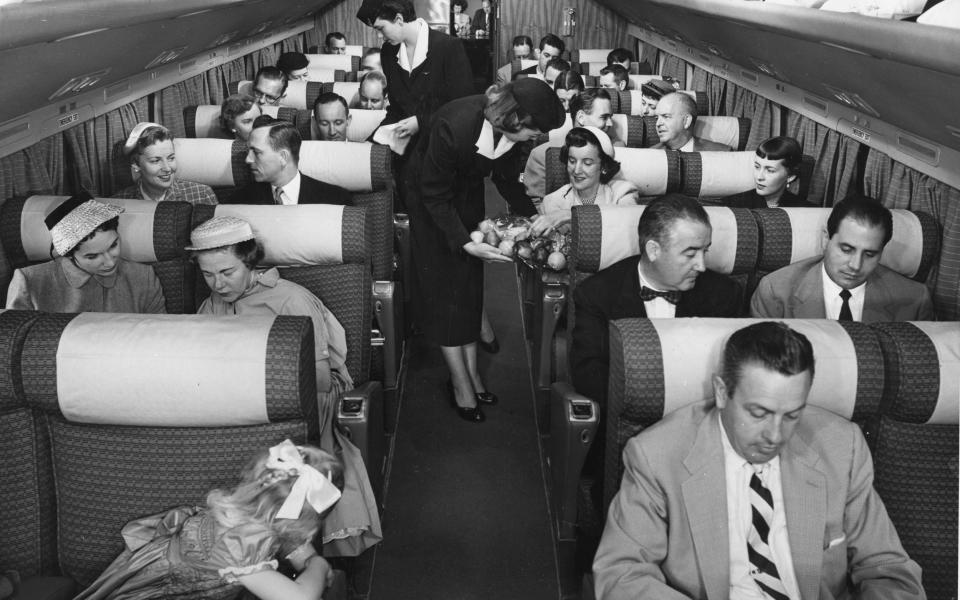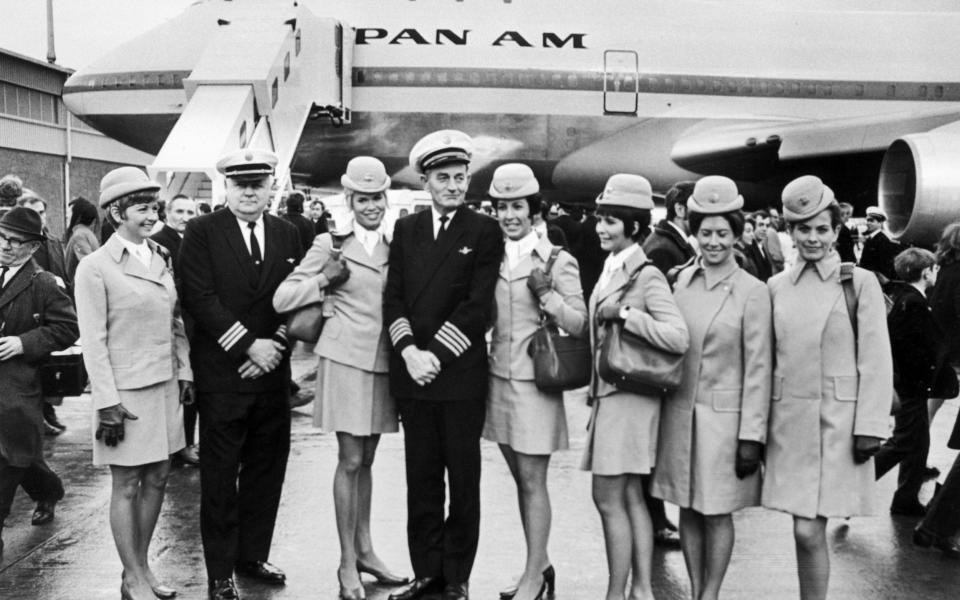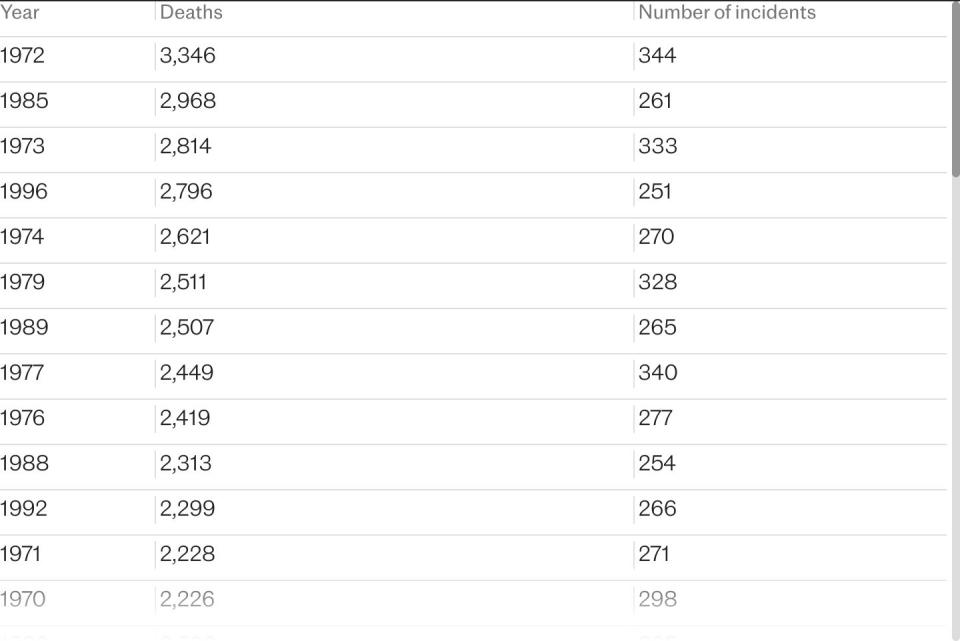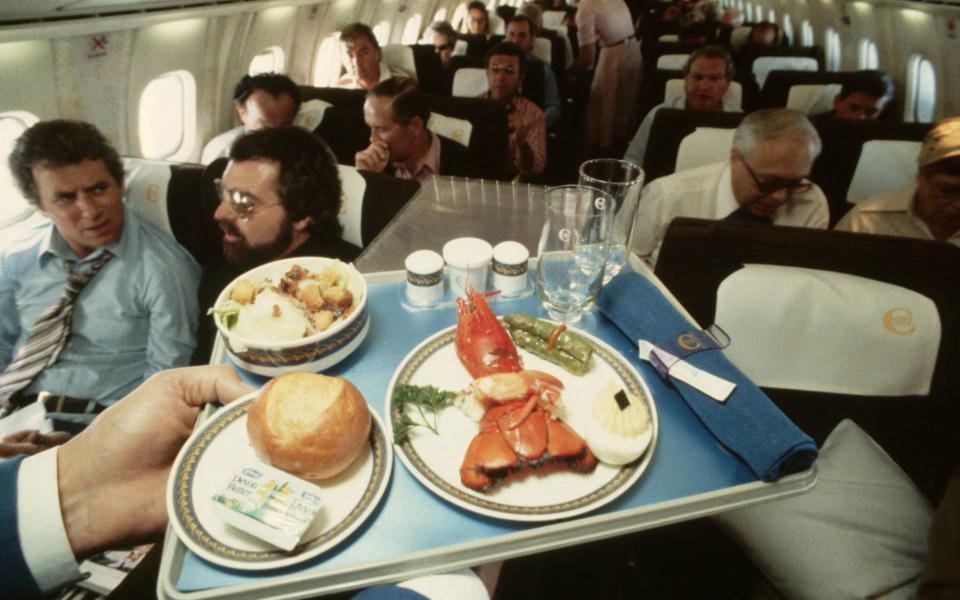The glory days of air travel are back – for a few wealthy travelers, at least. Next June, a momentous Pan Am-branded flight will whisk 50 lucky souls in style between New York, Bermuda, Lisbon, Marseille, London and Ireland, by private jet and staying in first-class hotels.
Tickets for the twelve-day trip cost from around £45,500, with organiser Bartelings promising “a wonderful social experience – as it would have been in the heyday of Pan Am”.
The American airline ruled the skies in the 1960s and ’70s, an era widely regarded as the heyday of aviation. But was the reality really so rosy? We spoke to some of the most frequent flyers of those decades to find out.
‘Minimal’ legroom and beds as luggage racks
Until the 1960s, most commercial flights were operated by propeller planes, but the advent of jet aircraft made travel infinitely smoother and faster. Airlines were excited about how the new planes could fly above turbulence, and advertised first-class cabins where people drank and ate in comfort and socialized around posh stateroom bars.

But for those in “tourist class,” or economy class, the picture was very different, says Fred Finn, who was named “The World’s Most Traveled Person” by the Guinness Book of Records in 1983 and has logged 16 million miles in the air since his first flight at age 13.
Now 84, he’s still traveling – with an aviation-themed autobiography Sonic boom out this month. “With the advent of the jet age, airlines couldn’t resist the temptation to cram in as many passengers as possible to maximize profits,” he says.
Legroom was “minimal,” but frequent flyers were cunning, says Finn: “In a quiet economy cabin, I figured out how to remove the armrests and stow them up top so I could lie down.”
It was more comfortable than first class on some propeller planes: “In the Boeing Stratocruiser, your bed looked like a luggage rack – although at least they brought you breakfast in bed.”
‘Everyone would reach for the vomit bags’
Smoking on planes wasn’t just common in the 1960s and ’70s – it was encouraged, says Hilary Thompson Dredge, who worked as a BOAC check-in agent in 1973. “It was like a brandy to calm the nerves,” she laughs. “But God, it was awful, a constant fume. Some rows were designated smoking areas, but it just filled the cabin.”
The pungent smell even made people feel sick: “Everyone reached for the sick bags – that was very common back then. We all felt terribly sick.”
So new was flying that travelers were often impeccably dressed (“You always wore your best suit,” Finn says)—but not for long. “By the time you landed, your nice outfit was a rumpled mess and you smelled like smoke,” Thompson Dredge recalls.
Many American airlines began banning smoking in the 1980s, but British Airways didn’t follow suit until 1998. Of course, ashtrays in the armrests of many planes persisted long afterward.
Drunk people (and donkeys) on board
Consider a planeload of passengers in the early 1960s who endured a flight with a group of drunken businessmen… who had brought a donkey on board, which spent the entire journey wandering around the cabin.
The pilot was stunned – he said the group was “just a bunch of good Joes,” Kenneth Hudson and Julian Pettifer wrote in their 1979 aviation memoir Diamonds in the sky. They “let the donkey loose in the cabin, destroying the furnishings. As the plane landed, the donkey fell against the door leading to the cockpit, and was rescued only by [the flight engineer]’s foot.”
Cattle were not common on board, but rowdy passengers were, Thompson Dredge says. “There was always someone misbehaving in economy class,” she recalls. “People got very drunk in the back. We got a quarter bottle of wine with our food, but you could buy more — and a lot of passengers did.”
A tough ride for cabin crew
“In the Seventies, the cabin crew were really excellent,” Finn recalls. “Pan Am even trained them to be silver workers at Savoy in London.” But the life of a flight attendant – or “stewardess”, in old-fashioned terms – wasn’t always as glamorous as it seemed.


Only women could apply for the jobs, and they had to be single, between 21 and 27 years old, with a “neatly proportioned figure” and “pleasant appearance,” according to the job advertisements. They were only allowed to hold the position for 10 years, and some lied about their singleness to keep their careers after marriage.
Once in the air, harassment was commonplace. In 1962, a flight engineer for U.S. airline Trans World Airlines (TWA)—which ceased flying in 2001—released photos he had taken with hidden cameras on board of a flight that showed cabin crew sitting on the captain’s lap. “I’ve heard many times a request, almost a demand, that a girl sit on his lap,” the engineer told Congress. “Since the girls are under his command, it puts them in a very difficult position.”
Passengers were sometimes no better. In the 1970s, BOAC introduced a new uniform for crew members flying between New York and the Caribbean: a thigh-skimming “paper dress” (it was actually a very light fabric) printed with bright flowers. But it was withdrawn from service within a year because, so the legend goes, unruly passengers would stick their cigarette lighters in the hem to “test” its flame-retardant properties.
Health and safety? Not likely
On January 7, 1972, the pilot of Iberia Flight 602 was chatting about football with Ibiza air traffic control – so intensely that he reportedly failed to notice the plane’s dangerous descent. Reports say he radioed the airport just before the crash, saying: “Get me a beer, we’re here.” All 98 passengers and six crew members were killed.
It was the start of the deadliest year in commercial aviation, with 72 incidents resulting in 2,373 deaths in 1972, according to the Aviation Safety Network, which maintains a database of all aviation fatalities.
The 1970s became the deadliest decade in commercial aviation, with a total of 16,766 aircraft-related deaths. The 1960s saw 13,692 deaths.
For Finn, 1977 was a year of narrow escapes: “One day I had a wheels-up landing [when the aircraft crash-lands on its belly, rather than its landing gear] when I arrived in New York. That same afternoon I took a flight to Copenhagen, which circled JFK Airport for hours. It turned out that there was a suspected bomb on board.”


Sky-high rates – but it was all worth it
Concorde, that great icon of speed and luxury, began commercial flights in 1976. Life on board was sweet: “Every time I flew, there was a chilled bottle of Dom Perignon under my seat,” Finn recalls. But for most travellers, it was utterly out of reach. A one-way ticket from London to Washington initially cost £431, equivalent to £2,200 today.


But just 20 years earlier, even the most modest transatlantic voyage was still expensive, with one-way tickets advertised at around £5,412 in today’s money. Fares were gradually reduced, but were still prohibitively expensive for most people.
But despite all the expense, inconvenience and danger, the 1960s and ’70s were truly the golden age of flying, Finn points out. “It was all so exciting that you didn’t really care,” he laughs. “Even a bad trip was a good trip, you know? We were all so happy to be a part of it.”